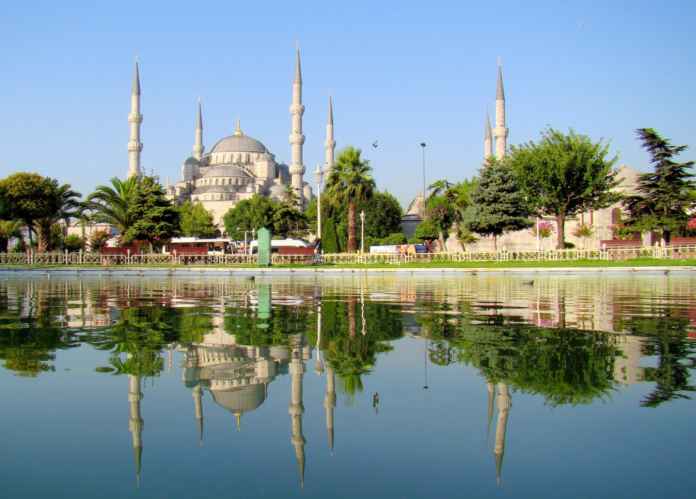One of the largest cities in Europe and the world, Istanbul attracts tourists from all over the world. Functioning as a bridge between Asia and Europe, both physically and culturally, Istanbul has a rich historical lineage. Located on both sides of the Bosphorus, the narrow strait between the Black Sea and the Marmara Sea, Istanbul was formerly the imperial city of Constantinople, also the last remaining outpost of the Romans. It was finally conquered by the Ottoman Sultan Mehmed II on 29 May 1453, after which, it emerged as a major cultural, political, and commercial centre of the Ottoman Empire.
As far as accessing Istanbul is concerned, the city is well connected via flights to the Istanbul Atatürk Airport, 20km west of the city centre. Istanbul also has a second airport, SabihaGökçen International Airport, located in the Anatolian side of the city. From the airport, visitors can opt for a taxi, metro, or the local airport service called “Havataş”. Visitors should note that all long-distance train services to Istanbul have been suspended until 2015. However, the nearest station is in Sirkeci, close to Sultanahmet. Another option to access Istanbul is via International ferries, which carry tourist groups from outside Turkey and stop at Karakoy Port.
The climate in Istanbul has been categorised into a temperate oceanic climate, characterised by hot and humid summers and chilly, occasionally snowy winters. The city witnesses a high annual average rainfall. Summer is generally hot with the average temperature around 27ºC during the day and 18ºC at night. Winter is cold and wet, averaging 2ºC at night and 7ºC during the day. Snowfall is common between the months of December and March. Flash floods are a common occurrence in Istanbul, all throughout the year. The rate of annual relative humidity is also high in the city. Travel enthusiasts suggest that late May to early June and and late September to early October are very pleasant months in Istanbul and therefore the best times to visit the city.
When in Istanbul, make it a point to include the following destinations in your itinerary:
- Hagia Sophia: From a Greek Eastern Orthodox basilica in 537 to a Roman Catholic church in the 12th century to a mosque in 1453, Hagia Sophia has served several religions over the centuries. Today, it is renowned for its famous mosaics depicting various religious scenes.
- Blue Mosque: Inspired by the Hagia Sophia, the Blue Mosque was constructed in the seventeenth century. Built by Sultan Ahmet, the mosque takes its name from the blue tiles on the dome and the upper levels of the interior. Visitors need to time their visits as the place is closed during the five prayer times of Muslims.
- Dolmabahce Palace: Built in the 19th century using 14 tons of gold leaf, this stunning creation is often compared to the Palace of Versailles in France. Constructed along the Bosphorus coastline, the palace is home to the world’s largest Bohemian crystal chandelier, a gift from Queen Victoria.
- Chora Church: Known as the Church of the Holy Savior in Chora, this Church survives in Istanbul from the days of Constantine. One of the most beautiful surviving works of Byzantine architecture, its magnificent mosaics and frescoes are decorated, depicting the life of Jesus and his mother, Mary.
For a vacation replete with fascinating new sights and a unique experience, do plan a trip to Istanbul!










